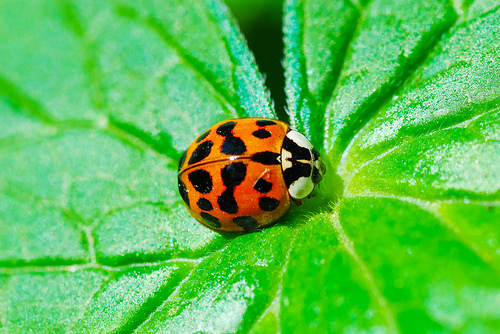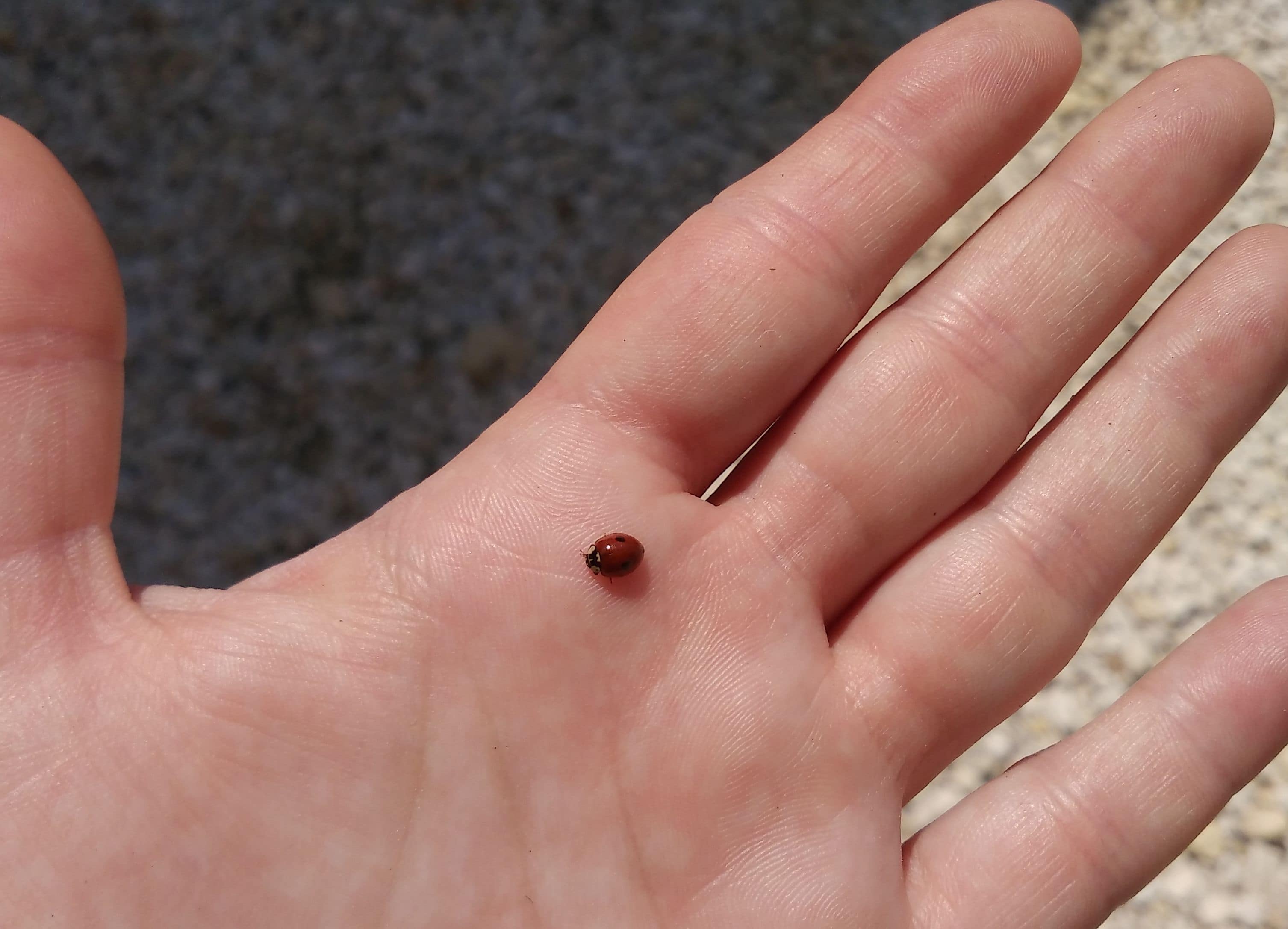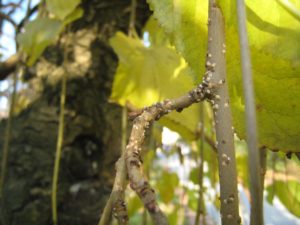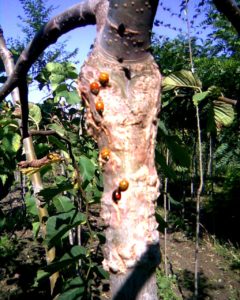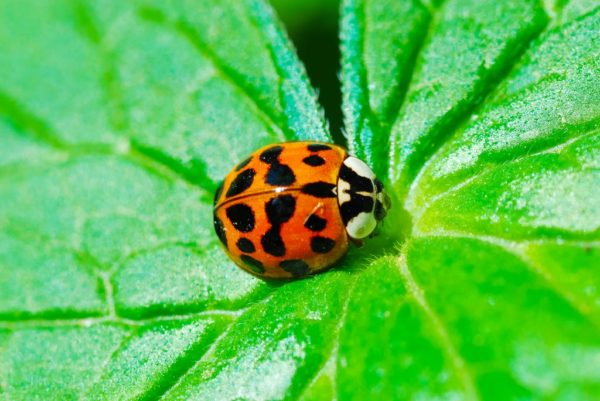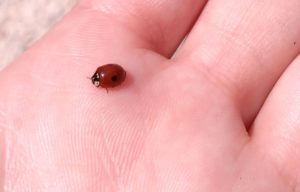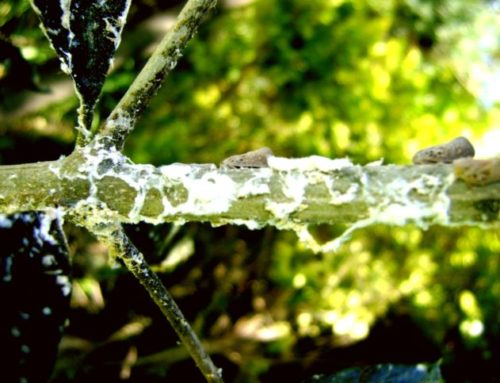Useful predator: Her Majesty – Lady beetle
Lady beetle is considered as a useful insect in our gardens. They are predators, and their larvae look like small alligators. Yuck, right?
Yet, they are swaggering through our yards and parks, making us smile when we see them. What’s the catch?
What kind of insect is Lady beetle?
By profession, lady beetle IS a predator. Sometimes useful (ask the farmers), sometimes cannibalistic if food resources are scarce. Can be pests if they feed on plants, but can also feast on nectar, pollen, and honeydew (aphids and whiteflies excrements). Foremost they are known as useful insects when they prey on aphids, red mites, white flies, mealybugs, and scale insects.
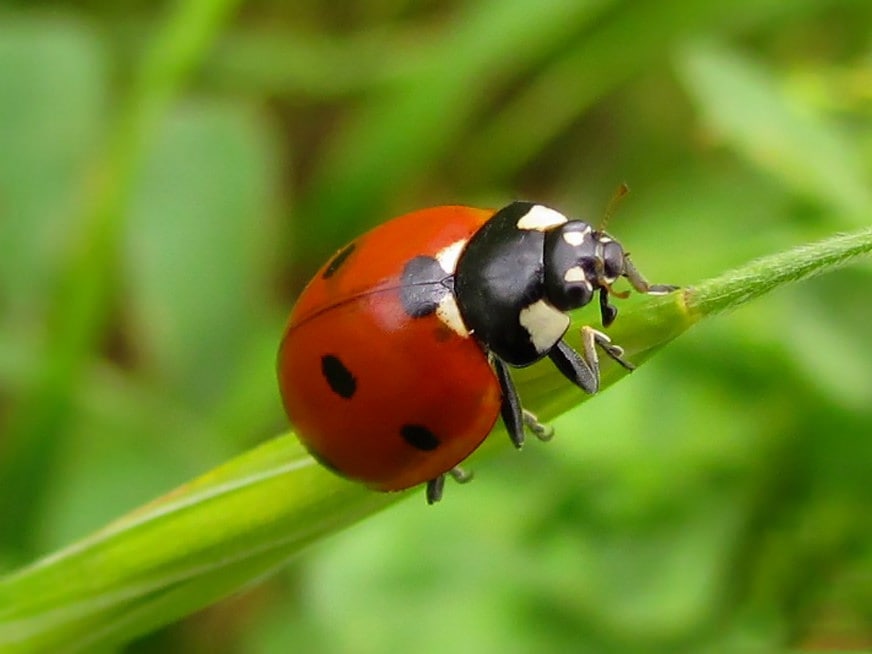
European Lady beetle – Coccinella septempunctata
We live amongst them throughout the globe, with 6.000 insect species all together under one name: Lady beetle. Actually, it’s Ladybug in the USA, and Ladybird in Britain, Canada, and Australia. By folklore connected to Virgin Mary. Hence the “lady”. A sexy, flashy one – we will add.
You get the idea.
Family Coccinelidae (a.k.a. Coccinelids) is quite numerous in described subfamilies, genera and species. Depending on part of the world, seems that each continent has a favorite genus of their own. Speaking of wide biogeography, they settle the entire planet, including terrestrial habitats and wetlands, sharing life space with us in both urban and agricultural places.
Ladybird, ladybird, fly away home…
Historically, seems that many nations adored them. Still do – for they are one of few insects taking part in cartoon characters and having songs of their own. Ladybirds make us smile when they land upon our hand…
Positive connotation of Lady Mary is just one of few. Their bright wings with black dots and margins warn the enemies that ladybirds are poisonous if eaten. Funnily, these dots make us welcome them to our yard.
Most often coccinellid colour range is bright yellow, orange and red. Combined with cute oval bodies and small size, makes them one of few beloved predators in our gardens.
Harlequin is a one tough dude
Actually, Harlequin is a Lady bug. He is a she. A multicoloured Asian. Asian lady beetle.
This biting lady beetle is a part of Harmonia genus and originates from China and Japan. It was introduced to Great Britain in 2004 as a bio-pest control agent, but turned rogue, as many non-native organisms did. Meanwhile, a similar thing happened in the USA and continental Europe, a decade or so earlier. Result: once a helping hand became tough voracious invader which now seriously disturbs local ecosystems.
What goes around, comes around
Most common European coccinellid beetles are Coccinela septempunctata with seven, and Adalia bipunctata with two dots. Adalia is native to North America too, while Coccinela was also introduced to this continent as bioagent, and remained there. Harmonia axyridis was introduced to Europe and USA and created an ecological mess, so to speak.
For the last couple of winters, you could have noticed ladybirds in your house, or swarms in early spring appearing with the first sunny days. They are somewhat bigger, tend to bite and release yellow liquid if feeling threatened.
These are Harmonia ladybirds, useful in our gardens as much as local beetles, but decimating them and taking their place over.
Asian lady beetle has a W-shaped pronotum
In colour and dot number, they look pretty much like native ladybirds. But besides different size, their pronotum (a cover on the first thorax segment) is slightly curved – “W“ letter-shaped.
So, now they are forbidden to use as bioagents and banned to introduce furthermore in Europe.
As the case of the Old Continent showed, newly introduced Asian ladybirds simply annihilated the settlers. Asians did not have natural enemies. They were more voracious, had more generations than their native cousins, and had more plasticity while adapting to new environment. So, they became numerous, aggressive, settling in competition’s habitat, taking their place in the food chain.
In one word – invasive.
Invasive Lady beetle – Better safe than sorry
Point is that some things are just not meant to be. Each genus/species is native to its own habitat. If relocated on purpose or accidentally, can become a nuisance in a new environment. If not monitored properly (and approved) in experimental conditions for some period, foreigners should not be released in the new surrounding. What so ever. Though introducing new lady beetle species in order to fight aphids gave positive results, the eco-balance was terribly disturbed.
So, not much of a triumph after all. Current situation – in Europe at least, is a mixed coccinellid population. According to entomologists, partaking of native species is decreasing. It remains to be seen if any courageous natural enemy will come up after all this time to defend native lady beetles’ territory for them, for there will be no more introducing predators…
Photo by DanielaC173 
Photo by wackybadger 


